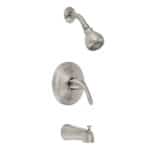Replacing the screen on an Apple Watch might seem difficult, but with careful instructions, the process can be straightforward. People may want to do this repair because the screen is cracked or not working properly. It’s important to be cautious because the repair involves delicate parts and adhesive. Knowing the right way to do it is important for a successful replacement without causing damage to your Apple Watch.
This guide addresses common Apple Watch issues, such as screen repair, water damage, and battery problems. It gives tips for fixing problems and advice on when to get professional help. Before starting the screen replacement, gather all the tools and replacement parts you need. It’s important to have good lighting and an organized setup to keep track of the small parts. Knowing the inside of the Apple Watch will help you avoid damaging cables and connectors during the replacement process.
Troubleshooting Common Apple Watch Issues
Screen Repair and Troubleshooting

If your Apple Watch screen is cracked, scratched, or not responding, there are a few things you can do to fix it. First, try restarting your watch. If that doesn’t work, you can try resetting your watch to factory settings. If neither of those options work, you may need to take your watch to an Apple Store or an authorized repair center.
Water Damage
While many Apple Watch models are water-resistant, they are not waterproof. If your watch gets wet, it’s important to dry it off as soon as possible. You can use a soft cloth to wipe down the watch, and you can also use a hairdryer on a low setting to dry it out. If your watch has been submerged in water, it’s important to take it to an Apple Store or an authorized repair center as soon as possible.

Battery Issues
If your Apple Watch isn’t charging or if the battery isn’t lasting as long as it used to, there are a few things you can do to fix it. First, make sure that your watch is properly connected to the charger. If it is, try restarting your watch. If that doesn’t work, you can try resetting your watch to factory settings. If neither of those options work, you may need to take your watch to an Apple Store or an authorized repair center.
Other Issues
If you’re having other issues with your Apple Watch, such as problems with the buttons, sensors, or software, you can try restarting your watch or resetting it to factory settings. If neither of those options work, you may need to take your watch to an Apple Store or an authorized repair center.
| Issue | Troubleshooting Steps |
|---|---|
| Cracked or unresponsive screen | Restart watch, reset to factory settings, contact Apple Store or authorized repair center |
| Water damage | Dry off immediately, if submerged take to Apple Store or authorized repair center |
| Battery issues | Ensure proper charging connection, restart watch, reset to factory settings, contact Apple |
New Apple Watch Models and Rumors
The Apple Watch Series 9, released in 2023, is the latest model, featuring an upgraded processor, enhanced health sensors, and a new Action Button. Rumors suggest a potential Apple Watch X model for 2024, commemorating the watch’s 10th anniversary, possibly with a microLED display and a redesign.
Water Resistance and Charging Issues
Apple Watches are designed to be water-resistant, not waterproof. They can withstand splashes, rain, and even swimming (except for the original model). However, deep-water submersion should be avoided. If your Apple Watch stops charging, try cleaning the charging port and contacts with a soft cloth. If the issue persists, try a different charger or contact Apple Support.
Features and Settings
Apple Watches offer various features, including fitness tracking, notifications, communication, music, and more. Popular features like Activity rings track daily movement goals, while the compass aids navigation. Users can download the Spotify app to stream music directly from their wrist. Adjusting settings like Low Power Mode and Do Not Disturb can optimize battery life and manage notifications.
Advanced Features and Health Tracking
The Apple Watch Ultra boasts unique features like a larger display, extended battery life, and the Action Button. It’s designed for outdoor enthusiasts and adventurers. The Blood Oxygen sensor, available on Series 6 and newer, measures blood oxygen levels, providing insights into respiratory health. Electrodermal activity (EDA) sensors on newer models measure stress levels.
Comparison and Choices
Apple offers several watch models with different features, sizes, and materials. The Apple Watch Series 9 and Ultra are the latest models, while the SE is a more budget-friendly option. Choosing the best watch depends on your needs and budget. For sleep tracking, consider third-party apps like AutoSleep or Sleep++ for in-depth analysis.
Accessories and Customizations
Numerous accessories enhance the Apple Watch experience, from bands to charging docks. Popular choices include sport bands, leather straps, and metal bracelets. The red dot on the Digital Crown indicates an unread notification. You can personalize your watch with different watch faces, complications, and settings.

Announcements and Other Features
The “Announce Notifications” feature reads incoming notifications aloud, useful for those with hearing impairments or in situations where looking at the watch isn’t possible. Siri on the Apple Watch can perform various tasks, from setting reminders to sending messages. The Apple Watch is not yet 5G capable, but future models may support this technology.
Older Models and Support
The Apple Watch Series 4 and newer models are still supported with software updates. Older models might not have all the latest features but can still be useful for basic functions. If you’re having trouble with your Apple Watch, resetting it to factory settings might solve the issue. However, it’s recommended to back up your data beforehand.
Key Takeaways
- Screen replacements on Apple Watches require precise handling and familiarity with the device.
- Proper preparation entails organizing your workspace and having tools ready.
- Step-by-step guidance helps avoid damage during the repair process.
Preparing for Screen Replacement
Replacing the screen of an Apple Watch requires attention to detail and the right tools. This guide will walk you through the initial steps of assessing your watch and gathering the necessary items to ensure a safe and successful repair.
Assessing Your Apple Watch
Begin by identifying the model of your Apple Watch, such as the Series 6 or Series 7, as the procedure may vary slightly between models. Check the extent of the damage to understand whether you will need additional parts or tools. Inspect other areas of the watch to see if the damage is solely on the screen.
Gathering Necessary Tools
Here is a list of tools you will need for the screen replacement process:
- Opening pick: To pry and separate the screen from the watch case.
- Heat source: An iOpener, heat gun, or hair dryer to loosen the adhesive.
- Spudger: For gently manipulating and disconnecting delicate cables.
- Curved blade or sharp tool: To create an initial gap between the screen and the body.
- Tri-point Y000 screwdriver: Specifically for Apple Watch screws.
- Isopropyl alcohol: Helpful for loosening adhesive if it’s particularly stubborn.
Ensuring Safety Before Starting
Take these safety precautions before beginning the screen replacement:
- Wear safety glasses to protect your eyes from any shards or debris.
- Ensure you’re working on a clean, static-free surface to avoid damaging the watch’s internal components.
- If using a heat source, be cautious of the temperature and avoid overheating any area of the watch as it can cause additional damage.
By carefully preparing and having the proper equipment on hand, you can tackle the task of replacing your Apple Watch screen with confidence.
Screen Replacement Process
When the screen on an Apple Watch breaks, a careful process must be followed to replace it. This ensures that the watch maintains its functionality and stays free from additional damage.
Opening the Apple Watch
First, make sure the watch is powered off to prevent any short circuits or damage. Gently place the device on a soft, lint-free cloth. To open the watch, often heat is applied around the edges to soften the adhesive that holds the screen in place. A specialized tool like the iFlex is then carefully inserted into the gap between the display and the frame, usually near the digital crown to lift and create an opening without scratching the watch body.
Removing the Battery
After opening the watch, the next step involves removing the battery, which powers the device. Disconnect the battery connector cautiously by using a plastic opening tool, taking care not to damage the delicate battery flex cable or any nearby connectors on the motherboard. Some models use a ZIF connector for the battery, which requires careful unlocking before the battery can be safely taken out. If there’s adhesive holding the battery, it’s often softened with a controlled application of heat before the battery is gently pried out to prevent stress on the device.
Detaching and Replacing the Screen
With the battery removed, focus shifts to the screen. The watch’s screen is connected to the body by display cables. One needs to detach these cables carefully; they are usually secured to the motherboard with a metal cover which is to be removed. Then, using a plastic opening tool, the display cables can be disconnected. If the model has a NFC antenna attached to the back of the screen, it’s essential to remove it without causing damage. After carefully detaching the old screen, prepare the new screen by attaching a replacement adhesive to the back. Then, connect the new screen’s cables to the motherboard, ensuring that they are seated securely.
Reassembling the Apple Watch
In the final step, reattach the battery using a new battery adhesive to secure it in place. Reconnect the battery connector to the motherboard, remembering to close the ZIF connector if the model has one. After ensuring all internal components are properly aligned and connected, press the new display into place. It’s crucial to apply gentle, even pressure to the screen to adhere it to the body without damaging it. After the watch is assembled, test the functions to confirm that the screen replacement has been successful.
Proceed with care and patience through each step of this process, and the Apple Watch can be back on a wrist, good as new. Remember to always use the proper tools and replacement parts, ideally those that are Apple-branded or of equivalent quality, to maintain the integrity of the device.
Frequently Asked Questions
When encountering issues like a broken or malfunctioning screen on an Apple Watch, users often have several questions. This section clarifies some of the common queries regarding the screen replacement process.
What are the steps to change the screen on an Apple Watch?
Initially, the screen is carefully detached from the watch body using specialized tools to avoid damaging the device. The adhesive that holds the screen in place is loosened, and the display is then separated from the rest of the watch, taking care not to disturb any internal cables.
Can I replace the screen on my Apple Watch by myself?
Yes, screen replacement is a task that can be done by the user. However, it requires specific tools and a delicate touch to avoid further damage. It’s vital to follow a reliable guide and possess a level of comfort with electronic repairs.
Is screen replacement feasible for all models of Apple Watches?
While the fundamentals of screen replacement are similar across different models, the specifics can vary. Each Apple Watch series may have unique construction and thus might need slightly different steps or tools.
What is the cost aspect of Apple Watch screen replacement?
The cost to replace an Apple Watch screen can differ based on several factors, including whether the watch is covered by AppleCare+ or not. Without warranty or AppleCare+, the repair cost can be substantial, potentially ranging from $159 to $800.
How do I find a reputable repair service for my Apple Watch?
Look for a repair service that guarantees their work, offers genuine parts, and provides a clear statement of the costs involved. Choosing a service that Apple authorizes ensures that your watch is in reliable hands.
What should I consider before deciding to replace my Apple Watch screen?
Consider the age and condition of your watch, the cost of the replacement, and whether you have the skills necessary for a DIY repair or if you’d rather rely on a professional service. Assess the repair’s value to you personally, as it sometimes makes more sense to invest in a new device.







